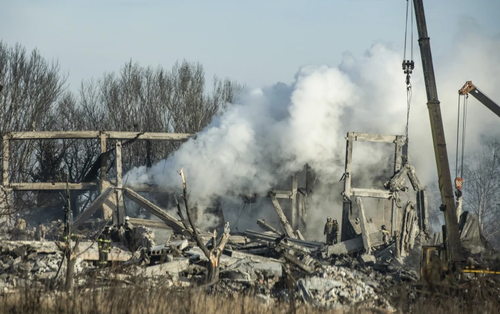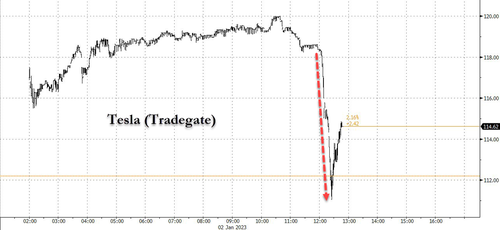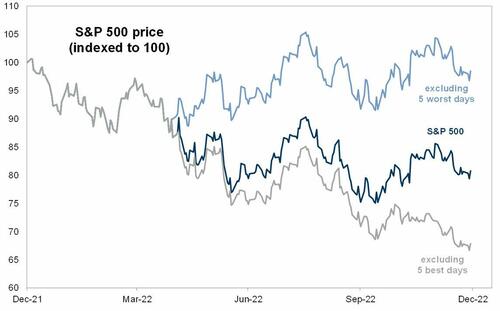Huge Death Toll After US-Supplied Himars Leveled Russian Barracks In Donetsk, Possibly Hundreds Killed
Russian forces have just suffered what may be their single biggest loss of the war in an attack, after a Ukrainian strike killed multiple dozens, or possibly hundreds, of newly mobilized troops in the east of the country. Moscow is now pointing to a US role in the devastating attack.
“Russia’s Defense Ministry said Monday that Ukrainian forces used a U.S.-supplied Himars rocket system to destroy a facility used as a base for mobilized troops in the city of Makiivka,” The Wall Street Journal reports of the attack in Russian-occupied Donbas.
The defense ministry confirmed that 63 Russian troops died in the blast, saying that a wave of HIMARS rockets delivering “high-explosive warheads” struck the facility that housed the troops.
A statement by top Russian commanders carried in state-run TASS reads: “The Kiev regime delivered a strike firing six projectiles from the US-made HIMARS multiple rocket launcher on a Russian unit near Makeyevka in the Donetsk People’s Republic (DPR). The attack left 63 Russian service members killed.”
Though only reveled for the first time Monday, the strike reportedly took place soon after midnight on Sunday, New Year’s Day. Some Russian sources are suggesting an ammunition depot was next to the targeted facility, which likely resulted in a deadlier, expanded blast.
The Ukrainian side is meanwhile claiming the true numbers among the Russian dead is much higher, with the Ukrainian military asserting that some 400 were killed and other 300 wounded – though Kiev didn’t directly take responsibility in the immediate aftermath.

Western media, including CNN and Reuters, have acknowledged being unable to independently verify the casualty numbers, however, some notable pro-Russian separatist officials have suggested it is more that the 63 dead officially cited by the Kremlin:
Igor Girkin, a former Federal Security Service officer who helped Russia annex the Black Sea peninsula of Crimea in 2014 and then organize pro-Russian separatist forces in eastern Ukraine, said on Monday that “the number of dead and wounded runs into many hundreds.”
That same official is one among several Russian military commentators who lashed out at top commanders for the apparent lack of protection for the hundreds of personnel staying in a small area. Russian sources say at least two of the inbound missiles among the six fired by the Ukrainians were shot down by anti-air defenses.
Girkin said on Telegram: “This is not the only such [extremely dense] deployment of personnel and equipment in the destruction zone of HIMARS missiles,” also in reference to reports of ammunition stored dangerously close.
Other pundits are saying troops’ use of cellular phones or other possible open source communications could have tipped off the Ukrainians as to the presence and location of the base, given the potential for intercepted signals…
So the Ukrainian army appears to have hit a base of mobilised Russians in Makiivka in Donetsk. Reports suggest that at least 100 Russians were killed. They were using open source communications. So Rus army is starting 2023 like it ended 2022 then. Still using open source comms! pic.twitter.com/cHXMfQPnp6
— Dr Stephen Hall (@stephengfhall) January 1, 2023
Additionally, Reuters references the following source from the Russian side:
One Russian pro-war military blogger known as Rybar, who has more than one million subscribers on the Telegram messaging app, said more than 100 people had been wounded in the strike and that rubble was still being cleared.
Rybar said there had been about 600 people in the building, and that ammunition had been stored in the same facility.
And The Telegraph points out this could surpass the prior single most disastrous event from early on in the invasion:
Ukraine estimated the death toll at “about 400”, with some pro-Russian separatists in the region agreeing “hundreds” had died. The Kremlin, in a rare admission, said 63 men had been killed – far outweighing the official death toll from the sinking of the flagship Moskva.
Rare for battlefield casualties to be confirmed by Moscow. But Makiivka attack was so deadly that staying silent may not have been an option. Russian MOD says 63 Russian soldiers killed when “temporary deployment point” hit, it says, by Himars rockets fired by Ukrainian forces.
— Steve Rosenberg (@BBCSteveR) January 2, 2023
Beyond the issue of the disputed death toll, another question is whether the Ukrainians had targeting assistance from US intelligence.
Interestingly, Ukraine’s defense ministry on the same day as the attack posted footage of what appears to be Himars system launching a strike in the dark.
Surprise! pic.twitter.com/R0gSLvm2LN
— Defense of Ukraine (@DefenceU) January 1, 2023
In the past months, mainstream US press has increasingly acknowledged that the Ukrainians are receiving direct battlefield targeting help, based on the admissions of anonymous Pentagon and US intelligence officials.
However, there’s currently no confirmation or clear evidence that US-supplied HIMARS were indeed used, as the Russians allege. But the fact that the facility struck was significantly behind the front lines may point to a longer range weapon being used, such as has been supplied by Western powers. Ukraine also seems to now be openly boasting of its US-supplied capabilities in the wake of the mass casualty attack on Makiivka.
Tyler Durden
Mon, 01/02/2023 – 14:15
via ZeroHedge News https://ift.tt/UbENrQ8 Tyler Durden












